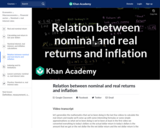
Relation between nominal and real returns and inflation. Created by Sal Khan.
- Subject:
- Economics
- Social Science
- Material Type:
- Lesson
- Provider:
- Khan Academy
- Provider Set:
- Khan Academy
- Author:
- Sal Khan
- Date Added:
- 07/27/2021

Relation between nominal and real returns and inflation. Created by Sal Khan.
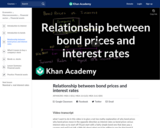
Bond prices and interest rates are inverseley related. Learn about the relationship between bond prices change when interest rates change in this video. Created by Sal Khan.

Price controls have the potential to reduce total surplus. In this video we step through some details on how one kind of regulation, a price ceiling, can reduce economic efficiency. A real world example of a price ceiling is rent control, which some cities have experimented with as a way to control rising housing costs. Created by Sal Khan.
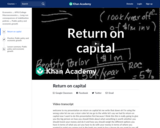
Introduction to return on capital and cost of capital. Using these concepts to decide where to invest. Created by Sal Khan.
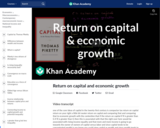
Return on capital and economic growth. A discussion with Sal Khan.

In this oral history from the Birmingham Civil Rights Institute, Frank Dukes describes his role in the 1962 boycott of discriminatory stores and businesses.
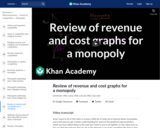
In this video, we review the key features, behavior, and consequences of a monopoly. Created by Sal Khan.

Why Keynesian thinking might not be ideal sometimes. Created by Sal Khan.
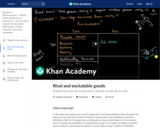
Learn the difference between rivalry and excludability, and how these characteristics determine whether a good is a private good, public good, artificially scarce good, or common resource.
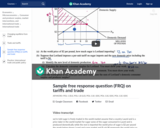
In this video, walk through the solution to a question on the effect of tariffs from the 2012 AP(R) Microeconomics exam.

Dealing with scarcity is the basis of economics, but what does it mean to say that something is scarce? In this video, we explore the definition of scarcity in economics and how scarce resources are different from free resources.
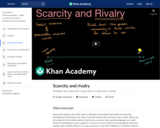
This video discusses two closely related ideas in economics: scarcity and rivalry.
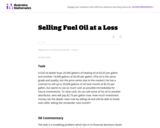
This task is a modeling problem which ties in to financial decisions faced routinely by businesses, namely the balance between maintaining inventory and raising short-term capital for investment or re-investment in developing the busines
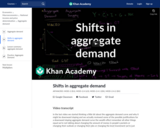
If a factor of aggregate demand changes in response to anything other than a change in the price level shifts aggregate demand. In this video, we explore the shifters of AD and factors that might shift aggregate demand to the left (a decrease in AD) or to the right (an increase in AD). Created by Sal Khan.
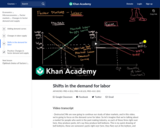
Changes in the demand for labor affect wage rates. Learn why labor demand changes, and the effect of changes in the demand for labor on labor markets.
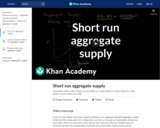
We claim that the short-run aggregate supply (SRAS) curve is upward sloping, but why? In this video, we explore the justifications for the aggregate supply curve to be upward sloping in the short-run. Created by Sal Khan.
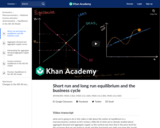
The interaction of SRAS and AD determine national income. We can compare that national income to the full employment national income to determine the current phase of the business cycle. An economy is said to be in long-run equilibrium if the short-run equilibrium output is equal to the full employment output.
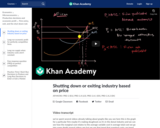
A firm shut's down temporarily when it can't cover its variable cost, but it exits the industry for good when it's economic profits are negative. In this video, learn more about how to use a graph of cost curves to determine when a firm shuts down, enters an industry, or exits an industry.

In this video, Sal begins a walkthrough of the process of money creation using a highly simplified example. Created by Sal Khan.
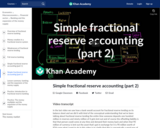
How banks can actually create checking accounts under a fractional reserve system. Created by Sal Khan.